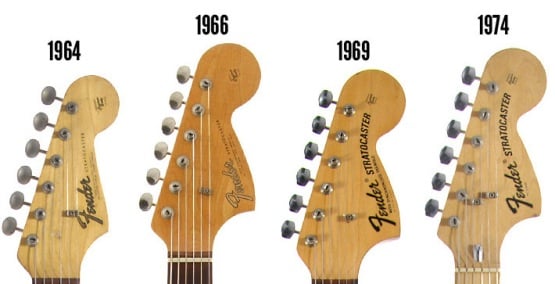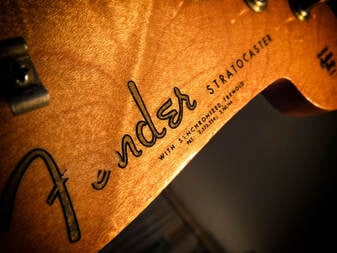PRE-CBS AND CBS STRATOCASTERS
|
Fender Stratocasters were almost built like a kit and put together from components stored on shelves or in bins and some parts might have been fabricated many months before assembly. Moreover, Leo Fender didn’t waste anything: if a component was left in stock, it was used. And if a component was not available, another was found because production had to go on. Hence, the question “When this Fender instrument was built?” is not completely appropriate and should be rephrased as “When this Fender instrument was assembled?”
|
Provided a Fender guitar has not been tampered with or altered, it can be successfully dated by combining the following elements:
Body date usually does not coincide with that on the neck and there is a gap of at least one, two or three months and, in few cases, this gap could be even of one year! Pot dates can be a useful tool in dating Fender guitars, but it’s important to keep in mind that this is the date that the potentiometer was produced and they may be considerably older than the guitar itself.
Moreover, since a Fender guitar was an assembled kit, it should be considered that its components may have been replaced. Therefore, dating a Fender instruments requires experience and sharp eye for detail.
Although neck date preceded the actual completion of an instrument by a few weeks or months they are, whenever available, it is commonly considered as point of reference for dating a Fender guitar.
- Every single component (headstock, fretboard, bridge, etc) can give an idea of the period of issue.
- Looking for dates and markings found on the neck, the body, the pickups or the pots.
- Serial numbers, despite they are not definitively chronological and overlap between years.
Body date usually does not coincide with that on the neck and there is a gap of at least one, two or three months and, in few cases, this gap could be even of one year! Pot dates can be a useful tool in dating Fender guitars, but it’s important to keep in mind that this is the date that the potentiometer was produced and they may be considerably older than the guitar itself.
Moreover, since a Fender guitar was an assembled kit, it should be considered that its components may have been replaced. Therefore, dating a Fender instruments requires experience and sharp eye for detail.
Although neck date preceded the actual completion of an instrument by a few weeks or months they are, whenever available, it is commonly considered as point of reference for dating a Fender guitar.
MODERN STRATOCASTER (FROM 1985 ONWARDS)
Dating a Stratocaster guitar only by its serial number is a common mistake done by most of the guitarists. In fact, exceptions are not few (just think of the serial numbers "E4", "N9", "SE" or "MSN").
First of all, you have to identify what model is your Fender Stratocaster. The easiest way is to look photos and the specification in the reference database of Fuzzfaced. If you know what model is your Strat, its evolution and its changes over the years, and comparing them with the serial number, you can get a quite good dating.
However, looking for the date found on the neck is the most affordable way to know how old is your Fender Stratocaster.
First of all, you have to identify what model is your Fender Stratocaster. The easiest way is to look photos and the specification in the reference database of Fuzzfaced. If you know what model is your Strat, its evolution and its changes over the years, and comparing them with the serial number, you can get a quite good dating.
However, looking for the date found on the neck is the most affordable way to know how old is your Fender Stratocaster.
Serial Numbers
- Serial Numbers: Stratocasters made in USA
- Serial Numbers: Vintage, American Vintage, and American Original Stratocasters
- Serial Numbers: Stratocasters made in Japan
- Serial Numbers: Stratocasters made in Mexico
- Serial Numbers: Stratocasters made in Korea and made in India
- Serial Numbers: Stratocasters made in Cina & Indonesia





